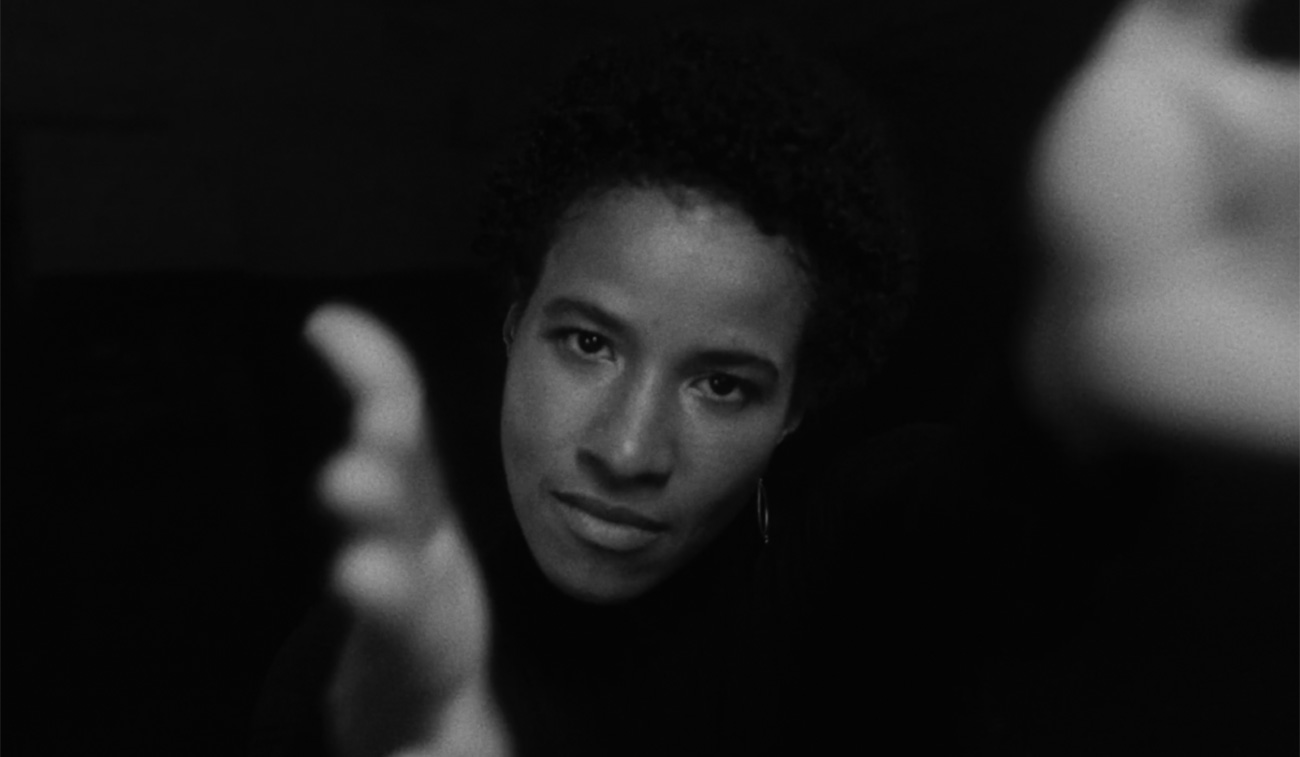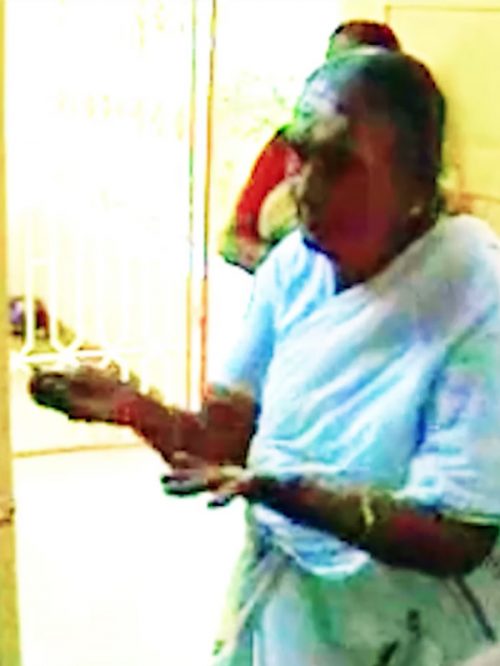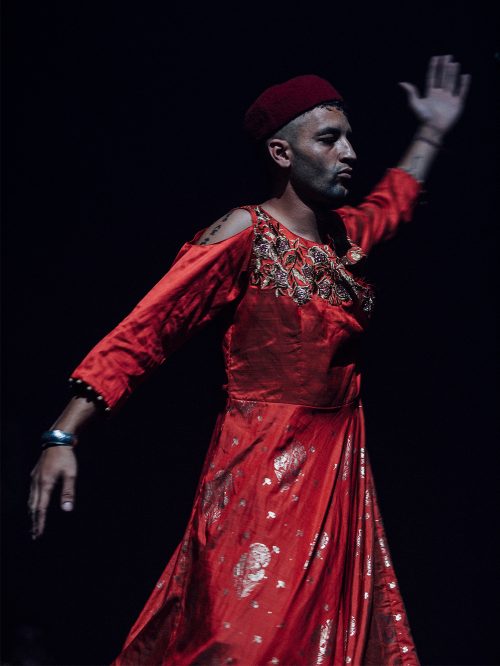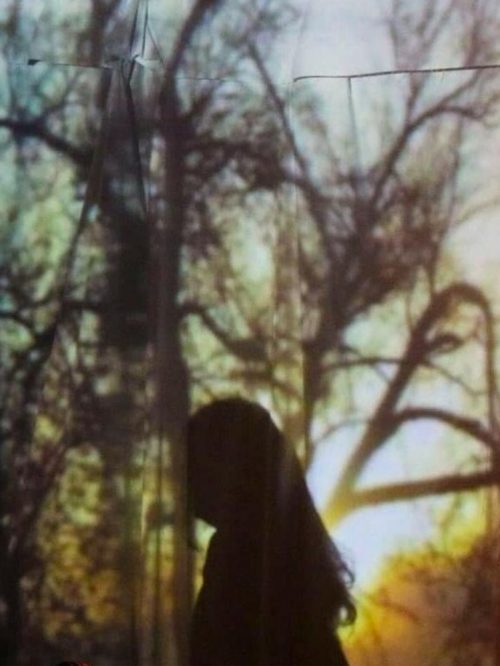Rising Osun
Every human being feels that they have something very special within themselves, that very different form of a person who stands out from others; on the other hand one has to say, that of course we are very dependent on other people’s ascriptions; even if you investigate yourself very carefully, for example in therapy, where that is of course a topic, you will have to say, ‘I am sometimes this, sometimes that, not completely arbitrary, I do have something that I see as completely my own, but I am aware that this may also change ‘. (Eva Jaeggi).
(I)
As the child of a black father and a white mother, racism has been part of my life. At age 6 I was accepted into the ballet centre John Neumeier/Hamburg. I was the only black girl there. There was also no adult black dancer in the dance school who could have been my role model. I was, therefore, the only „other“/different student. Initially this did not strike as negative. However, due to the build of my feet and my physiognomy I soon hit technical limits (in ballet). I had to bend myself a lot to get ‘on point’. As a result I was often frustrated and finally gave up my professional ballet training at age 12, feeling that I was not able to tap into my full energy.
I wanted to let off steam and not feel that I have to control and bend myself anymore. Also – I did not want to be the only ‘different one’ anymore. I just wanted to belong and not always stand out.
In classical ballet you are made aware very quickly, what kind of body you need to have to make it to the top. I did not have that body.
Later, when I did figure skating, I was again the only black girl. So people called me Surya Bonaly – after the only black figure skater who did the dangerous Flic-FLac on ice. I never did the Flic-Flac, but the expectation was always there, I could sense it: there is a pressure to appeal to people and conform to expectations.
Then there came a point when I became too tall for my category in figure skating, therefore I left that world as well.
After this I always ‘arranged’ myself in my career in ways that suited me: I had jobs as a background dancer, I choreographed for other artists and I spent a lot of time on stage as a dancer/performer – and I always felt that I was in a good position and could be myself. Looking at it in retrospect I realize that I sugarcoated the situation: people found it exotic to book me and included me to fulfill a ‘quota’.
Today I know that in the name of self-protection I did not realize how toxic these experiences were. I was always the only one (who was different), and that was always presented as a ‘positive’ position. I misunderstood this position often.
Comments such as : “Your skin is so beautiful, you do not get sunburnt, your hair is cuddly” etc. gave me the feeling of being special. I was always the person others envied. For some time, this gave me strength. Afterall I was constantly acknowledged….
During the last two years I looked into the topic of racism more intensely and it struck me how unhealthy and racist all these waypoints of my career have been. As harmless as these experiences seemed to me at the time – it was actually the opposite: especially since they seemed so ‘normal’ I had to (actively) realize their subtle, bitter effects.
People, who make stupid remarks toward me in everyday life, appear as just in a bad mood to white people. For me, however, from the beginning they come across being against me, even if it may not be meant like that, my first thought is: “My appearance is the problem!”
These everyday comments from my surroundings greatly affected my artistic trajectory and my conduct. I felt assured by ‘positive’ racism! In response to comments such as “You dance so well, it’s in your blood!” I could barely justify myself and for a long time only smiled awkwardly. For too long – because the sentences first sounded like compliments – afterwards, however, they lived on in me as toxic snide remarks. What about my commitment, my hard work, my efforts, and my training – do those aspects not count?
After two engagements in Musicals with roles that – from that point of view – “suited me”, I noticed more and more, how stereotypical these roles that I was squeezed into were.
Comments from white producers such as: “Sarah, You are doing too much, Sarah not so loud, Sarah dear, don’t exaggerate!” made me smaller and increasingly quieter … so I had to leave the musical business urgently as well! This world wasn’t right for me. It wasn’t about my story but stories told from the point of view of white people.
On the other hand, however, these kinds of remarks also encouraged me, because a propulsive thought grew in me: “Now more than ever, I don’t want to be wherever I am seen as too loud and too much. I will break away from it and find a better place to be loud and a lot!”
Then, I had really empowering experiences with STOMP.
It opened up a new world for me in which I was never “too much”. The director and producer said to me repeatedly in the rehearsal: “Sarah, I will never tell you to do less nor to stop, Sarah go for it! “.
From then on it was clear to me that I had arrived. I can hardly describe what an overwhelming feeling it was to go on stage for the first time with the power that I really have in me, without constraining energy or having to pretend!
The constant remarks that I was “too overboard, too strong and / or too much” has basically always made me stronger. I just had to find a place where I can be myself with all that I bring. In the stage show STOMP I got the role of the main drum: She is the person who keeps the pulse within a majority of men. She wears an orange drum around her neck and beats it with a wooden stick. This is how it creates the bass sound (bass drum of a drum kit).
A strong image that gives strength. I am carried by this strength and self-esteem in various situations to this day. In total, I toured the world with STOMP for seven years.
(II)
I’ve only recently started engaging with my body as a projection screen for prejudices. In the eyes of many people, it reminds of vacation, light-heartedness, exotic fruits, strength, warmth and joy. The opposites of these stereotypical ideas, which I also experience as a person – work, problems, “unripe fruit”, weaknesses and grief – these are not allowed for me in the white majority society. This kind of external control often makes it difficult for me to reveal myself as a person or to live according to my personality. I will always be confronted with prejudices that I have to defend myself against and that make me vulnerable.
Then I dance “on eggshells”. This is how my body and my soul have behaved til now. I tried to adapt, to please and was not in my full strength as a result.
A central question that I ask myself is: “How can I transform the gaze of the passive observer and use it for myself and my dance?
As long as I experience the construct – the constellation – performer and spectator, it is difficult for me to ignore judgment. But when I invite the audience into the actors’ room, the point of view changes and expands. This is how a door opens in public spaces. That’s where the transformation begins for me.
My experiences in public space have shown me that there are possibilities to change my point of view and also my perspective. In public spaces, e.g. on the street, the actively performing person is just as unprotected as the passive spectator. There I can enlarge space and turn the ones who are passive into active people – this results in a change of perspective for everyone! Then, judgment and condemnation only take place to a limited extent. Positions change and everything is open!
In my opinion, by changing positions, a judgmental person can feel what it feels like to be evaluated and judged. Such a broader perspective ideally creates understanding and empathy. People then also become more humble.
The stage has great strength and power. She can be the mouthpiece for many.
A person can convey any kind of information via a stage – that can gain currency beyond the stage. A stage has many eyes and ears and can reach many people. To do this, we first have to decolonize the stage / stages themselves and change their structure in order to find new possibilities and to realize new ideas on stage(s).
I want to create formats in which people come together and think of new ways and exchange ideas on a stage. Discussions can become the focus and part of the performance, roles can be changed on stage, hierarchies can be broken up. Our life can be shown on stage in real time, … and become the performance. Well-known, unknown or untold stories contribute to a ´change through performance´ to an ´ (e) motional enrichment´.
Power structures as they exist in the ‘conventional’ stage world must finally be broken up. Basically, I find it important to detect power in a performative way, and also to think with my body what someone has to give up in order to overcome old patterns and create new ways of thinking and also body / languages.
I would like to have the space to be special and to be equal as a person.
Our society is so strongly shaped by a colonial mindset that we should become more open and flexible. We have to communicate and exchange to find new ways of thinking. If we keep and maintain colonial patterns, we will get stuck. So let’s MOVE ON together!
Suggested Citation
Lasaki, Sarah. 2021. “RISING OSUN“ In: Moving Interventions 1: Ambiguous Potentials // Performative Awakenings, December 2021. Edited by / Herausgegeben von: Sarah Bergh and Sandra Chatterjee, with Ariadne Jacoby (CHAKKARs – Moving Interventions), translated by: Sandra Chatterjee, copyedited by: Veronika Wagner. Published by /veröffentlicht von CHAKKARs – Moving Interventions.
About the author
Sarah Lasaki, who was born in Hamburg and has her roots in Nigeria, Switzerland and France has been a professional dancer for 20 years and has been working intensively for 10 years with children and young adults in the field of dance and music.
From 2007-2015 Sarah toured worldwide with the hit show “STOMP” and since then she has been working on the fusion of dance and body percussion. She worked as a choreographer / dancer in some „Kampnagel” productions with Mable Preach, Yolanda Gutierrez, Ursina Tossi, Israel Sunday Akpan and Regina Rossi. In her latest project, Sarah worked with the M.A.R.K.K, Mbassy Hamburg( Bisrat Negassi)and Come In Tent( Claude Jansen), together with her own Youth Collective on the „ Re-Enactement of Things“. She is a permanent member of the “Body Rhythm Hamburg” Festival and is currently working on her Solo about „ Identity“.







